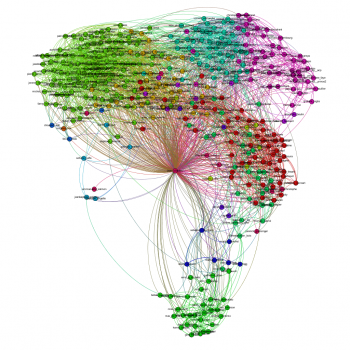Case Study

Challenges
Social network theory has produced a wealth of paradigms to describe the nature and evolution of groups of people who interact, possibly in subgroups, with one another. Social networks can be as simple as a friendship or as complex as a terrorist network. Two competing classes of models have been applied to modeling change in across a wide range of social networks, from corporations to political blocs to religious groups. Which approach is better? Or can the two approaches be reconciled?
Solutions
Investigation of the properties of the two approaches explored the qualitative dynamic behaviors that are captured faithfully and interpretably by each approach. The primary technical tools for comparing and contrasting the two approaches are latent variable representations and dynamical systems analysis.
A team of researchers from the social sciences, statistics and applied mathematics constructed a conceptual and operational framework to characterize the strengths and limitations of the two modeling approaches across multiple settings. From this framework, the principled comparison of different models in different contexts has provided feedback for examining and refining social network theory and its application. In consequence, this framework enables social sciences researchers and other analysts to choose intelligently a model with the dynamic properties that best suit each specific application and/or to use the framework to test alternative theories in a particular context.
Research Project
The goal of this project is to reconcile two methods for modeling change in social networks over time: a class of statistical models and intelligent agent models. The research contrasts the properties of these two approaches, exploring what qualitative dynamic behaviors in social networks are captured usefully and interpretably by each. The primary tools are latent variable representations and dynamical systems analysis. The result is a framework that characterizes the strengths and limitations of the two classes of models in multiple settings, and provides feedback that stimulates refinement of existing theories for social networks and development of new theory. Social network theory has produced a wealth of paradigms to describe the nature and evolution of groups of people who interact, possibly in subgroups, with one another. Settings in which social network theory has been applied range from friend to corporations to political blocs to religious groups. Counterterrorism is one application of particular current importance, in which the notion that the network might have latent (unobservable) characteristics that are important to its evolution over time is especially germane. Currently, however, there is not good understanding of strengths and limitations of different models for the dynamics of social networks. The researchers on this project, drawn from the social sciences, statistics and applied mathematics, are constructing a conceptual and operational framework that allows the principled comparison of different models in multiple contexts. In addition to advances in theory and methodology, the framework enables social sciences researchers and other analysts to choose a model whose dynamic properties are most appropriate to each application.
Funding Sponsors: National Science Foundation, U.S. Air Force Office of Scientific Research
Workshop: NISS Affiliates Workshop on Overarching Issues in Risk Analysis
Technical Report(s):
Technical Report 157: Sensitivity to noise variance in a social network dynamics model
